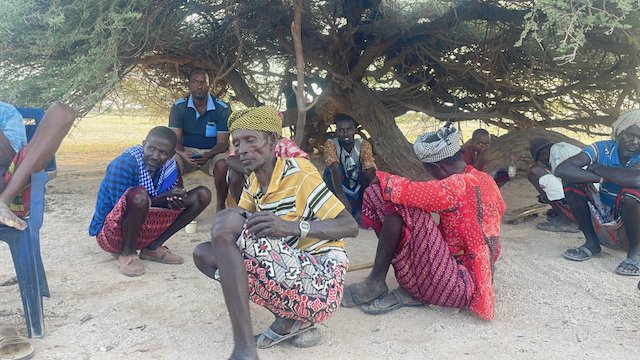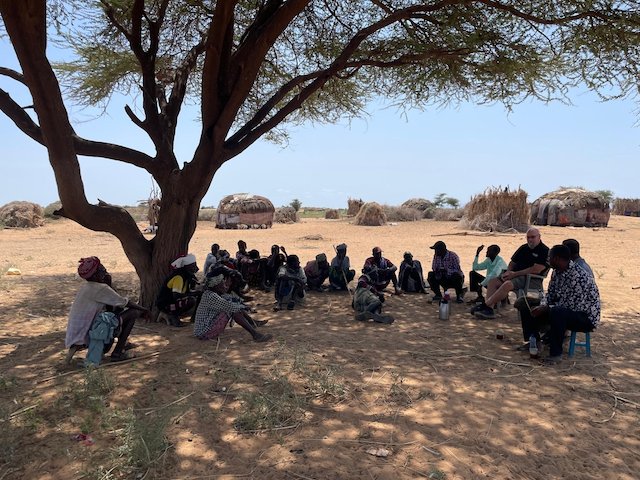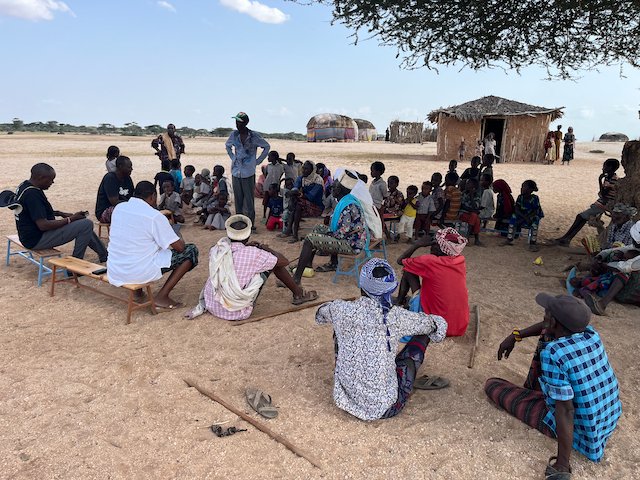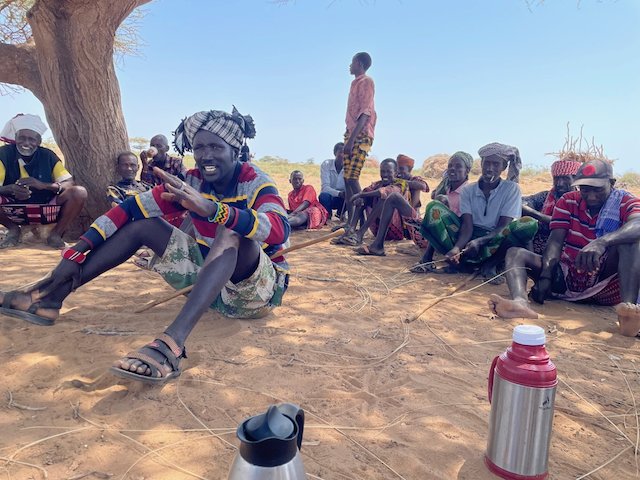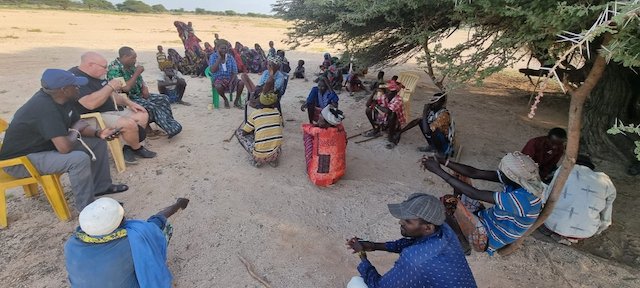Life in the Desert
Shade is sparse on the edge of the desert, so isolated trees become important places for congregating. During our recent site survey to Kalacha, on the edge of the Chalbi Desert in Northern Kenya, Acacia (Vachellia) Tortilis trees provided what was required as we met three incredible communities that we now look forward to working with. Years of experience has taught us to look beyond initial impressions to discover the remarkable resilience that is so often a feature of people who live at the margins of existence. Certainly that is the case with these Gabra pastoralist communities that have endured recent historic drought, followed this year by unprecedented rains. Despite loosing 80% of their goat and camel herds to a climate in destress, remarkably they press forward.
Signs of life and initiative are very evident as each of these communities strive to facilitate the development of children under six in preparation for their eventual matriculation to primary schools that are some distance away. Whether under the shade of a tree or a temporary classroom built with assistance from the local Catholic mission or County administration, these three communities are moving forward with what is available to them. Hearing of our interest in joining together with them in partnership in this endeavor, we were welcomed with copious amounts of camel-milk tea and even a little dancing!
We sat and listened to the challenges articulated by each community:
“The camels keep eating the palm fronds from the roof of the classroom!”
“Hyenas endanger those (women and children) who walk long distances to collect water in the very early morning”
“A single 12x12 classroom cannot accommodate the numbers of children we have, now that we are forced by circumstances to settle closer together.”
Interacting with the community to understand and respond to concerns
Over the next two years, we plan to construct three modified Integrated Child Development Centers in the region surrounding Kalacha. We will also endeavor to pipe water from nearby wells to store at each location, enhance the capacity of available teachers and work with local partners to ensure the adequate provision of nutritional supplements, education materials and tree shade.

